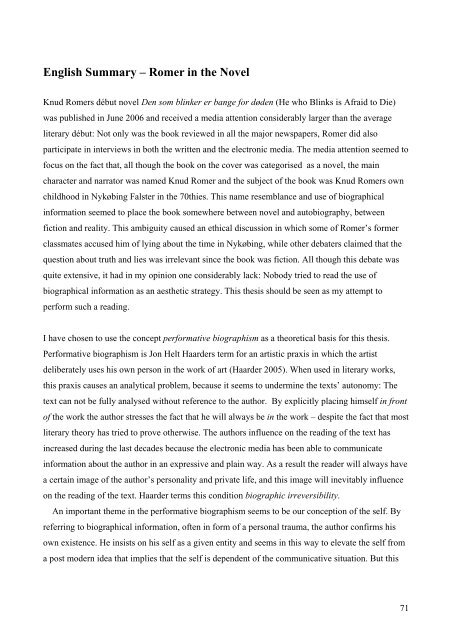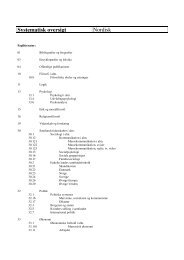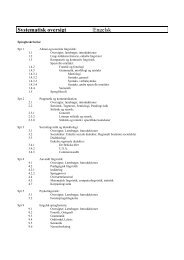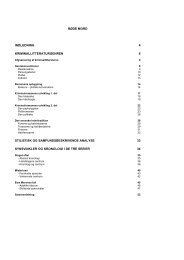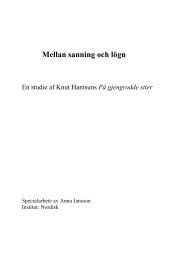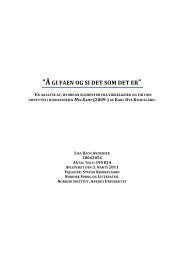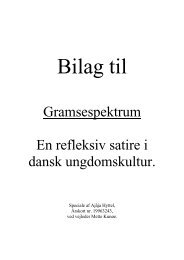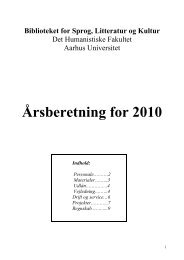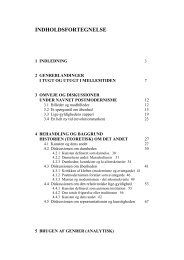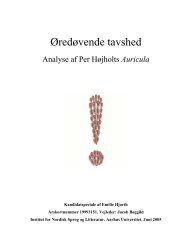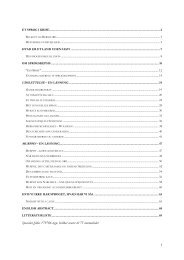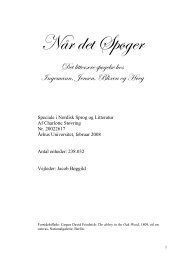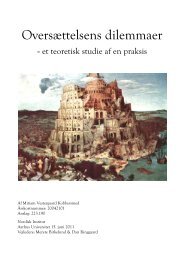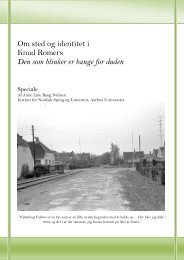Romer i romanen - Aarhus Universitet
Romer i romanen - Aarhus Universitet
Romer i romanen - Aarhus Universitet
Create successful ePaper yourself
Turn your PDF publications into a flip-book with our unique Google optimized e-Paper software.
English Summary – <strong>Romer</strong> in the Novel<br />
Knud <strong>Romer</strong>s début novel Den som blinker er bange for døden (He who Blinks is Afraid to Die)<br />
was published in June 2006 and received a media attention considerably larger than the average<br />
literary début: Not only was the book reviewed in all the major newspapers, <strong>Romer</strong> did also<br />
participate in interviews in both the written and the electronic media. The media attention seemed to<br />
focus on the fact that, all though the book on the cover was categorised as a novel, the main<br />
character and narrator was named Knud <strong>Romer</strong> and the subject of the book was Knud <strong>Romer</strong>s own<br />
childhood in Nykøbing Falster in the 70thies. This name resemblance and use of biographical<br />
information seemed to place the book somewhere between novel and autobiography, between<br />
fiction and reality. This ambiguity caused an ethical discussion in which some of <strong>Romer</strong>’s former<br />
classmates accused him of lying about the time in Nykøbing, while other debaters claimed that the<br />
question about truth and lies was irrelevant since the book was fiction. All though this debate was<br />
quite extensive, it had in my opinion one considerably lack: Nobody tried to read the use of<br />
biographical information as an aesthetic strategy. This thesis should be seen as my attempt to<br />
perform such a reading.<br />
I have chosen to use the concept performative biographism as a theoretical basis for this thesis.<br />
Performative biographism is Jon Helt Haarders term for an artistic praxis in which the artist<br />
deliberately uses his own person in the work of art (Haarder 2005). When used in literary works,<br />
this praxis causes an analytical problem, because it seems to undermine the texts’ autonomy: The<br />
text can not be fully analysed without reference to the author. By explicitly placing himself in front<br />
of the work the author stresses the fact that he will always be in the work – despite the fact that most<br />
literary theory has tried to prove otherwise. The authors influence on the reading of the text has<br />
increased during the last decades because the electronic media has been able to communicate<br />
information about the author in an expressive and plain way. As a result the reader will always have<br />
a certain image of the author’s personality and private life, and this image will inevitably influence<br />
on the reading of the text. Haarder terms this condition biographic irreversibility.<br />
An important theme in the performative biographism seems to be our conception of the self. By<br />
referring to biographical information, often in form of a personal trauma, the author confirms his<br />
own existence. He insists on his self as a given entity and seems in this way to elevate the self from<br />
a post modern idea that implies that the self is dependent of the communicative situation. But this<br />
71


